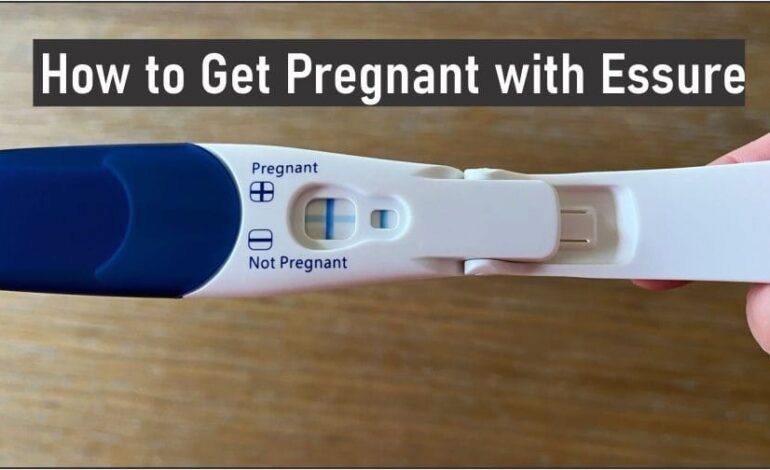Introduction
Welcome to our comprehensive guide on understanding your conception date and how to utilize a conception date calculator to find out when you got pregnant. Whether you’re curious about the timeline of your pregnancy or you’re planning for prenatal care, knowing your conception date is invaluable. In this article, we’ll explore the ins and outs of conception, explain the workings of conception date calculators, and provide insights into why it’s essential to know this information.
Understanding Conception
Conception marks the beginning of pregnancy and occurs when a sperm fertilizes an egg. Typically, this happens during ovulation when an egg is released from the ovary and travels through the fallopian tube, where it can be fertilized by sperm. Factors such as the timing of intercourse, sperm viability, and reproductive health can influence the precise moment of conception.
Understanding the concept of conception is crucial for accurately estimating your conception date. For those trying to conceive, tracking ovulation signs such as changes in cervical mucus, basal body temperature, and ovulation predictor kits can help pinpoint the fertile window when conception is most likely to occur. Additionally, individuals undergoing fertility treatments such as in vitro fertilization (IVF) may have their conception date determined by the date of embryo transfer or other medical procedures.
What is a Conception Date Calculator?
A conception date calculator is a tool designed to estimate the date of conception based on various input parameters. These calculators utilize information such as the date of the last menstrual period (LMP), the length of the menstrual cycle, and the average length of online pregnancy test calculator to provide an estimated conception date. There are different types of conception date calculators available online, ranging from simple calculators to more advanced ones that take into account factors like ovulation timing and sperm lifespan.
How to Use a Conception Date Calculator
Using a conception date calculator is straightforward. Simply input the required information, such as the date of your last menstrual period and the length of your menstrual cycle, into the calculator. The calculator will then generate an estimated conception date based on these parameters. It’s essential to provide accurate information for the most precise results. Once you have the estimated conception date, you can use it to track your pregnancy timeline and plan for prenatal care accordingly.
Importance of Knowing Your Conception Date
Knowing your conception date can have several benefits. Firstly, it allows you to determine your pregnancy timeline more accurately, including your estimated due date. This information is crucial for planning prenatal appointments, scheduling ultrasounds, and monitoring the progress of your pregnancy. Additionally, knowing your conception date can provide psychological reassurance and help you bond with your baby during pregnancy.
Factors Affecting Conception Date
Several factors can influence the timing of conception. These include the length of the menstrual cycle, ovulation timing, sperm viability, and reproductive health conditions such as polycystic ovary syndrome (PCOS) or endometriosis. Understanding these factors can help you pinpoint the most likely date of conception and improve the accuracy of your calculations.
For example, individuals with irregular menstrual cycles may find it challenging to determine their conception date accurately. In such cases, consulting with a healthcare provider or fertility specialist may be beneficial. Similarly, individuals undergoing fertility treatments or assisted reproductive technologies may have their conception date determined through medical procedures such as IVF Calculator.
Alternative Methods for Determining Conception Date
In addition to conception date calculators, there are alternative methods for determining the conception date. These include tracking menstrual cycles and ovulation signs, ultrasound dating in early pregnancy, and retroactive calculation based on the estimated due date. Week calculator and weeks calculator are also useful tools for estimating conception dates.
Tracking menstrual cycles and ovulation signs involves monitoring changes in cervical mucus, basal body temperature, and using ovulation predictor kits to identify the fertile window. Ultrasound dating, performed in early pregnancy, can provide an estimate of the gestational age of the fetus and help determine the conception date. Retroactive calculation involves working backward from the estimated determining due date with ivf to determine the likely conception date, taking into account the average length of pregnancy. Additionally, for those curious about early signs of pregnancy, a DPO calculator can help estimate the days past ovulation, providing insights into potential implantation timing.
Conclusion
Understanding your conception date is essential for monitoring your pregnancy timeline and planning for prenatal care. By utilizing a conception date calculator and considering factors that influence conception timing, you can gain valuable insights into your pregnancy journey. Remember to consult with a healthcare provider for personalized guidance and support throughout your pregnancy.


